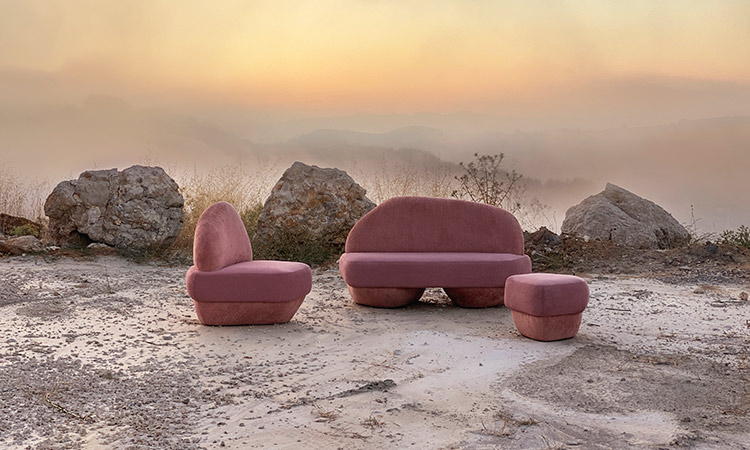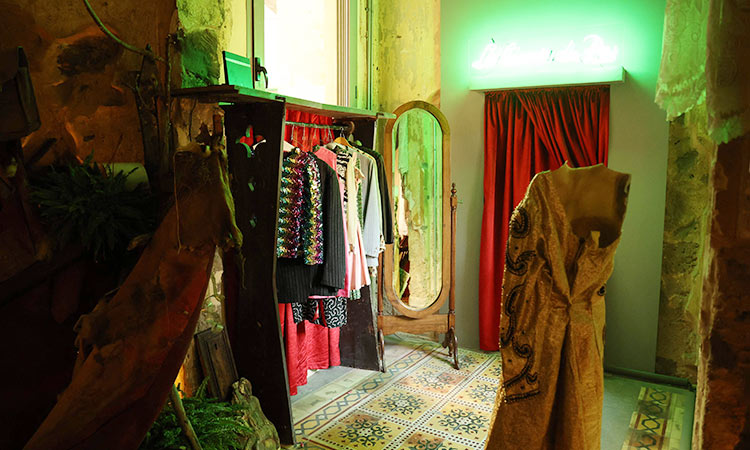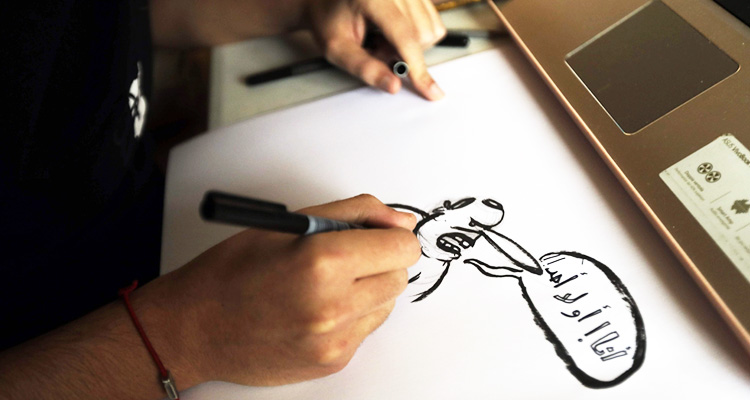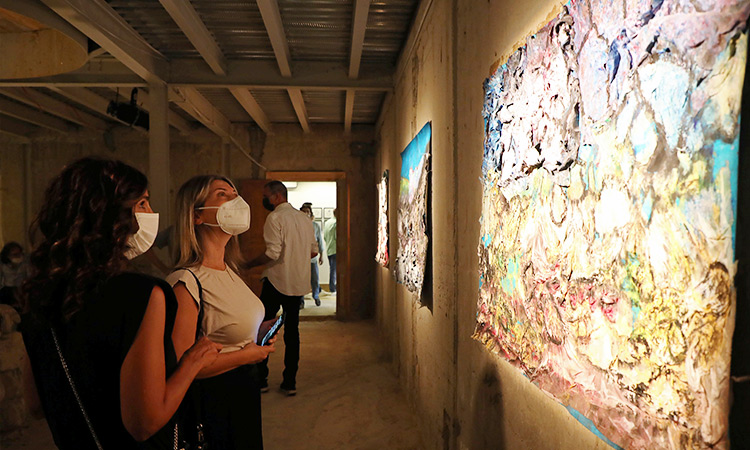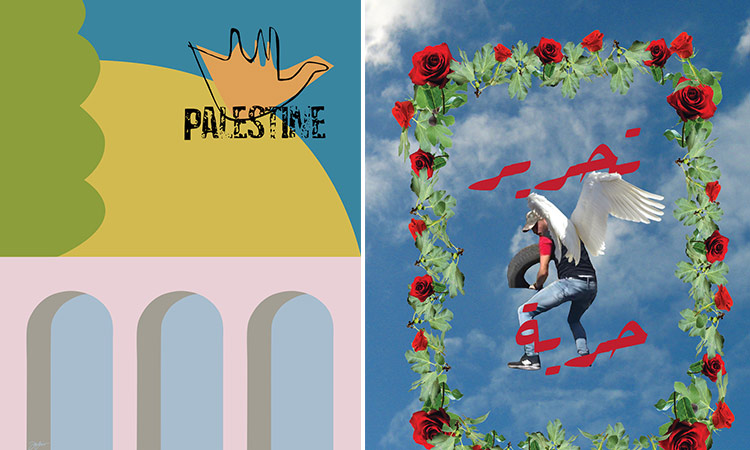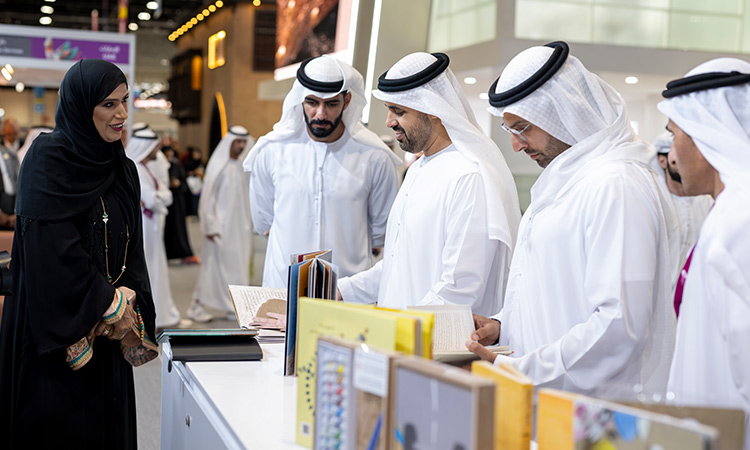Katya Traboulsi chooses love over fear at show in Leila Heller Gallery
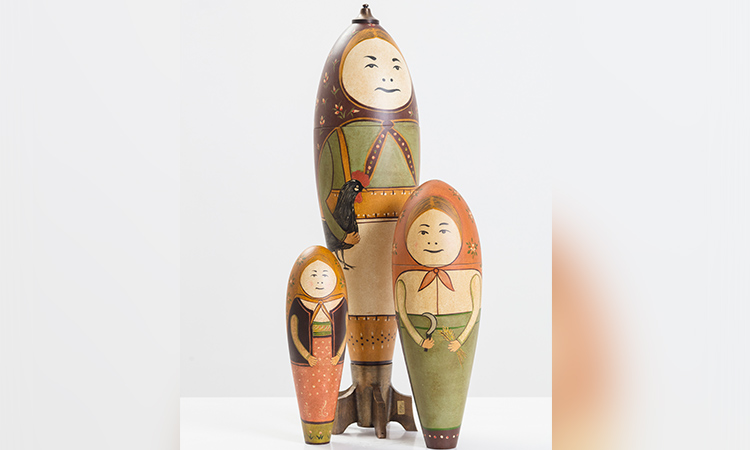
A Matryoshka mortar doll and its companions.
Muhammad Yusuf, Features Writer
Leila Heller Gallery is currently hosting Beirut based multimedia artist Katya Traboulsi’s solo show titled Perpetual Identities. Opened April 26 and to run till September, Traboulsi talks about identity as a force that no war can eliminate and that bounces back once it deals with the pressure.
During the Lebanese Civil War in 1975, she received the empty sleeve of a mortar shell for her birthday; it automatically found a place on her shelf. It was an instinctive gesture – the artist did not reflect further on its nature or the journey which led it to her. Thus the object, which had blindly sown death where it fell, ended up in her room, raised to the status of a trophy celebrating the courage of fighters or the defeat of enemies or anything else that war does. In 2014, as the Arab Springs wilted into winters, the memory of this object, trinket or trophy, called on Traboulsi again. Meditations on the mortar shell inspired an installation project, which sought to divert the weapon from its fearsome destiny and make it serve Life.
READ MORE
Succession to end with 90-minute-long movie-like finale
Jane Fonda says she s the happiest shes ever been
A.R.M Holding Art Dubai and artist Dahlgren join hands for youth project
The depiction of the shell dressed in a variety (46) of national symbols, is the physical and spiritual core of the Perpetual Identities project. Each objet d’art is handmade, using different materials, including ceramics, porcelain, resin, wood, and iron. Each is titled with a country’s name; most are produced by their native artisans. The dimensions of the objects are 75 x 20 cm and their base and top are made of brass and/or iron.
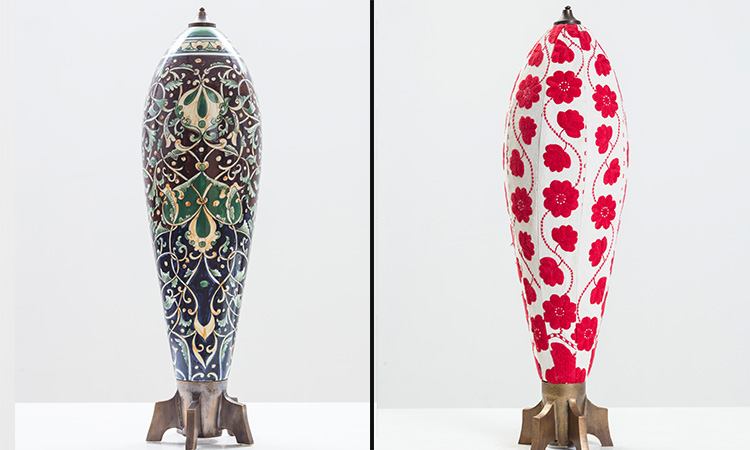
The shell is a symbol of destruction and with its distinctive shape, has become one of the most violent symbols of ruination and invasion in history, since the invention of the cannon. The 46 shells here, adorned with the arts and crafts of various countries, become a body of designs, themes and skills, inviting everyone to join in universal feelings of Humanity.
The shell becomes a book, an inventory of myths, of traditions, of embodied know-how, inviting the discovery of the Other. Its otherwise deadly one-way trajectory – the fire and forget instruction - becomes an exchange. The shell becomes rather like a plough and sows not death, but a seed of knowledge and civilisation.
Its scope becomes sociological, theological and philosophical. And the many cultures and societies involved in fulfilling the project enrich the device with infinite meanings. As part of the process, cultural identities have been added as a palimpsest, and the mortar shell becomes polished with reflections and revelations.
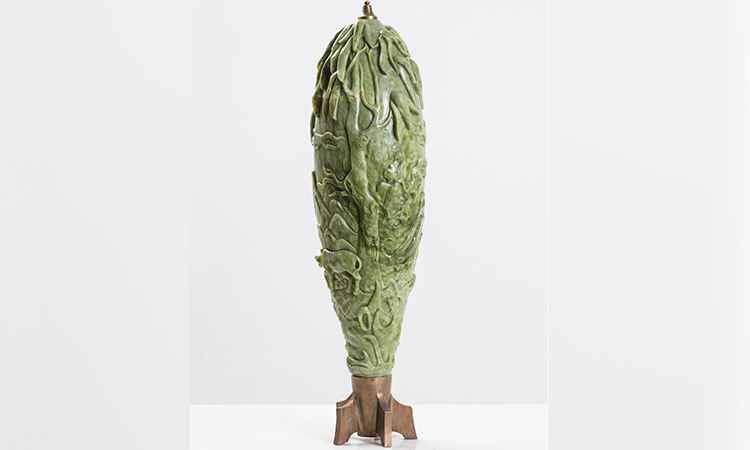
The mission of the transformed object is to celebrate the glory of Humanity. Removing its previously intended function permits it to carry universal and eternal messages. The mortar as art transcends its destructive origins and becomes a melting pot of immortal identities.
Traboulsi’s creations are inspired by historical events. The artisans who took part in the project are the perpetual memory of that history, who glorify their artistic talent and skill and the heritage of their identity. An object of death forgotten on a dusty shelf finds itself rehabilitated. The other part of the exhibition is the artist’s collection of painted rear doors of trucks titled ‘Rejaa ya mama’, which is a reminder of the impatient wait for the return of those who had to leave their homeland.
It was inspired by Traboulsi’s desire to collaborate with the traditional creators of the doors and to share their knowledge through her art. In her words, each truck tells a story, full of life, beliefs and love. A moment of driving behind a truck connects one to the driver’s story, hopes and fears, through the graphics and text on the rear door. The project is also an homage to the city of Tripoli in Lebanon and to its tireless truck drivers, whose work links regions and lives without distinction of religious or political differences.
Painted with the owner’s identity, the truck doors become a mode of communication with onlookers: the images, symbols and lyrics act as memory markers. The doors and tailgates become opening doors for Traboulsi for a new life and artistic experience.
Born in 1960, her practice is characterised by the intensity with which she confronts the effects of the Lebanese civil war. Both her painting and sculptural works are characterised by the bold use of colour, which disrupts the viewer’s expectations of the dark subject they are presented with.
She lived and worked in Dubai from 1989 till 2016, before returning to her native Beirut. Her work has been exhibited internationally since 1986 in Paris, London, Dubai, Kuwait, North America, the Museum of Modern Art of Algiers and the International Armory Show in NYC.
Since its establishment over four decades ago in New York, Leila Heller Gallery has gained worldwide recognition as a pioneer in promoting a creative dialogue and exchange between Western artists and Middle Eastern, Central and South Asian artists. The gallery is also active in the American, European, and Middle Eastern secondary art markets. In 2015, it opened its first international location in Dubai’s Alserkal Avenue. At 16,000 square feet, the gallery features three exhibition spaces, making it the largest of its kind in the UAE. It organises shows with world renowned curators, hosts educational panels and film screenings, and produces catalogues and books. Each year, it participates in major international art fairs and its artists take part in art fairs and exhibitions globally and their works are collected worldwide.
